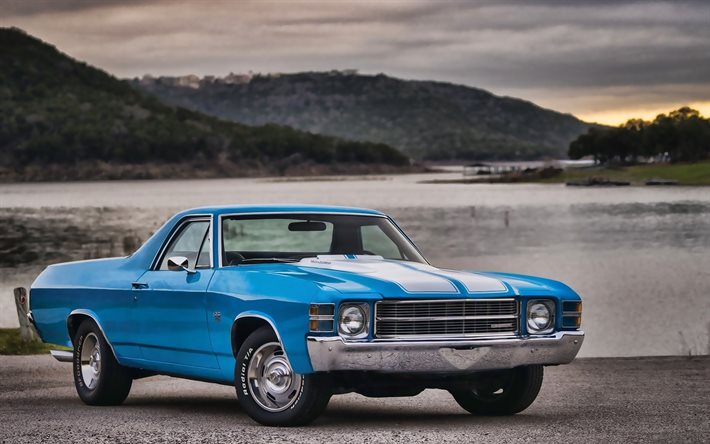
The Paris Motor Show was the place where Citroen DS launched. It stood out from its rivals due to its wide single-spoke steering wheel and large glove compartment. Sales of the DS began quickly, with 800 bookings in the first hour of the show and more than 79,000 in the entire show. The Citroen DS commanded a staggering 940,000 francs. Before receiving delivery of the car, buyers were required to pay a deposit equal to 80,000 francs.
Citroen
Citroen's flagship sedan, the DS (design code DS), was introduced in 1973. It was powered by a 2.3-liter engine that produced 115 horsepower when carbureted and 128 hp when equipped with fuel injection. The car was so fast that the French speed limit of 118 mph was a rough estimate. In the 1970s, Citroen began to develop a replacement for the DS. Project L was a more aerodynamic design and shared visual cues from the mid-level GS. Citroen opted not to build another car after the DS was discontinued.

DS
Citroen DS's rich history makes it a popular choice for those who want a classic car. The DS was produced for the first time in 1958. It was then kept in production until 2010, when it was rebranded as a luxury brand. The DS is a highly sought-after car and it commands a high price at international auctions. It is also considered to be the most beautiful vehicle ever produced.
DS Pallas
From 1955 to 1975, the DS was a French automobile icon. It was famous for its innovative technology, aerodynamic design, and other unique features. The DS was also equipped hydropneumatic suspension which allowed it to have a smooth ride. The DS Pallas luxury model featured a separate front window. Citroen produced some nice cars even after the DS was retired.
DS Hydropneumatic suspension
In 1955, the Citroen DS Hydropneumatic suspension systems made their debut on the revolutionary DS. Designed by Paul Mages, this suspension system combines high-pressure pipework with hydraulic springs and independent rear suspension. The hydraulic suspension system was eventually limited to the Audi TT and Mercedes-Benz E-Class. However, it was still being used on many other models by the end of the 1950s.
DS Techeetah
For the 2018 Formula E season, the DS Techetah was introduced. Since 2003 when the DS first appeared in Formula E, it has been a winner in every race. The DS switched to supply the Techeetah in 2019, but the team's new partnership paid off in the drivers' championship and teams' title. The DS Techetah was the World Touring Car Championship's overall champion for the 2018/19 season.

DS Techetah won both championships for drivers and teams
The Citroen DS Techeth placed fourth in the first season's FIA Formula E Championship. But, the team quickly moved up the Teams' standings. Since its inception in 2003, the French manufacturer has dominated this series and won a race every season. DS switched to supplying Techetah in the 2018/19 season. Jean Eric Vergne won this year's drivers' championship. This partnership was a success, with the Citroen DST Techetah finishing first and second in Teams' standings.
FAQ
How long does an automotive course take?
A course in automotive lasts three years.
The first year of your training is devoted to theory. You will learn all about cars. The second year is spent on practical training where you learn how to drive, fix engines, and do other mechanical jobs around the car. The last year is spent at a local shop, where you will get practical experience with real-world problems.
What should I know about car mechanics
Auto mechanics don't require any knowledge. It's enough to know how to fix things. It's why many people begin to fix things by fitting brake pads or changing tires.
You need to be able read and comprehend diagrams, follow written instructions and adhere to basic principles of good practice. Also, you will need to know how to tell if parts require replacing or repair.
It is important that you have proper training and guidance before you attempt to repair vehicles. This is especially true if your job involves expensive parts like transmissions or engines.
Even though you don't need to be an expert on cars, it is important to understand the fundamentals of mechanical engineering and physical physics. This will include understanding the basic principles of engine operation and brake function.
It is important to realize that you must be ready for all types of situations. If your vehicle has been in an accident, you might need to be able to handle it. Also, you'll need to be familiar with dealing with accidents or breakdowns.
Finally, you need to be willing and able to quickly learn new skills. You will need to be able not only to diagnose problems but also to perform simple maintenance tasks like tightening bolts and nuts.
To be a car mechanic, do you need a degree? What about part-time study?
It is not essential, but it is helpful. Employers prefer candidates who have completed a full degree. It shows that your efforts have been put in and you have succeeded.
You can still study while working, however. Some universities allow students to complete coursework over the summer holidays and finish their studies later in the year. Other universities permit students to take classes part-time during the school year.
How do I fix my car for a hobby?
It's a great hobby to take on if you are passionate about cars. You could learn how to repair them, buy parts for them, sell them or just enjoy them. This would be a wonderful hobby if you're looking to find something completely different.
It's difficult to make this a fulltime job. It takes dedication and hardwork. It will also require a large amount of investment.
So unless you have a good reason for wanting to get involved with cars, then it might be best to leave it alone.
How do I prepare for a mechanic apprenticeship?
It is important to have an understanding of what you are going into. You should be familiar with the mechanics of cars, and how they work. This will make it easy to find the right place to start your first day in the garage.
Also, you need to know how fix simple problems, such as tires and lights that aren't working.
You will be able to diagnose and repair problems yourself.
Also, it is important to know how parts fit together so that you can put them back together.
Finally, you should be able use tools safely.
All these things will help you to become a competent mechanic.
Statistics
- Apprentice mechanics earn significantly less hourly than mechanics who have completed training, with a median wage of approximately $14.50 an hour, according to PayScale. (jobhero.com)
- There were 749,900 jobs available for automotive service technicians and mechanics in 2016, which is expected to grow by six percent through 2026. (jobhero.com)
- According to the BLS, total auto technician employment is expected to exceed 705,000 by 2030. (uti.edu)
External Links
How To
How to obtain a mechanic certificate
The mechanic's certifications are designed for people who want to become certified as professional automotive technicians. They cover all aspects of auto repairs including engine diagnostics. Electrical systems. Brakes, suspension. steering. Fuel injection. Air conditioning. Heating. Exhaust. Diagnostic tools. Body repairs. Collision damage repair. Paintless dent removal. Motor vehicle emissions testing.
The 12-hour program includes three months of on the job training at a dealership participating. Students must take a minimum 60-hour semester of classroom instruction. Additionally, students must pass a written examination that includes both theory and practical questions. The National Institute for Automotive Service Excellence will administer the state exam to students who have completed the coursework. Automotive service technicians must be certified by ASE.